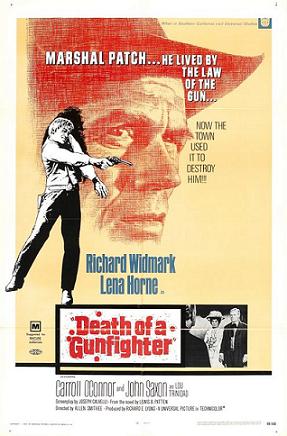 After going away to college, Carl Dixon (25 year-old Michael Douglas, in his film debut) has returned to his rural hometown. Though Carl comes from a family with a long military tradition, he’s against the war in Vietnam and is considered to be a hippie by his family. As soon as his stern father (Arthur Kennedy) sees Carl, he sits him down in the kitchen and, after declaring that no one is going to mistake his son for a girl, cuts his hair. Meanwhile, Carl’s mother (Teresa Wright) stays out of the conflict between her husband and her son while Carl’s older brother (Peter Strauss) continues to resent Carl for the accident that injured his spinal cord and kept him from going off to war.
After going away to college, Carl Dixon (25 year-old Michael Douglas, in his film debut) has returned to his rural hometown. Though Carl comes from a family with a long military tradition, he’s against the war in Vietnam and is considered to be a hippie by his family. As soon as his stern father (Arthur Kennedy) sees Carl, he sits him down in the kitchen and, after declaring that no one is going to mistake his son for a girl, cuts his hair. Meanwhile, Carl’s mother (Teresa Wright) stays out of the conflict between her husband and her son while Carl’s older brother (Peter Strauss) continues to resent Carl for the accident that injured his spinal cord and kept him from going off to war.
Carl has an announcement to make. Despite being against the war in Vietnam, he’s joined the army. He will soon be going overseas, where he’ll get a chance to be a hero and where he says he hopes to love the enemy. No one in his family can understand his decision, though they certainly spend a lot of time talking about it. Carl can’t explain it either, though he certainly keeps trying. Eventually, Carl ends up going for a swim with a local girl (Deborah Winters), smoking weed with a woman who lives in a cave with a mummified baby, and painting the family barn with a mural that’s supposed to explain it all.
Hail, Hero! is an extremely talky film that wants to say something about the war in Vietnam but it doesn’t seem to know what. The film’s too sincere in its confusion to be a disaster but it’s also too muddled to really be effective. Carl is opposed to the war but he drops out of college and enlists because it’s what his father would have wanted him to do but his father doesn’t seem to be impressed with the decision and Carl doesn’t seem to like his father to begin with so why volunteer for something that you find to be immoral? The film would have been effective if Carl had been drafted into the war and had to choose between reporting for duty or fleeing to Canada. But having him drop out of college and volunteer to serve makes it more difficult to sympathize with him when he talks about how opposed he is to the war.
If the film gets any attention today, it is probably because of Michael Douglas in the lead role. This was Douglas’s film debut. He was 25 when he made the film and he was already a dead ringer for his father. Unfortunately, he doesn’t give a very good performance. He’s miscast in the lead role. Carl Dixon is supposed to be insecure and conflicted. Insecure is not something that comes to mind when you think about Michael Douglas. Instead, Carl just comes across as being petulant and self-righteous. Hail, Hero! tries to say something about the war in Vietnam but Carl Dixon’s the wrong messenger.
 At the turn of the 20th century, the mayor and the business community of Cottonwood Springs, Texas are determined to bring their small town into the modern era. The Mayor (Larry Gates) has even purchased one of those newfangled automobiles that have been taking the country by storm. However, the marshal of Cottonwood Spings, Frank Patch (Richard Widmark), is considered to be an embarrassing relic of the past. Patch has served as marshal for 20 years but now, his old west style of justice is seen as being detrimental to the town’s development. When Patch shoots a drunk in self-defense, the town leaders use it as an excuse to demand Patch’s resignation. When Patch refuses to quit and points out that he knows all of the secrets of what everyone did before they became respectable, the business community responds by bringing in their own gunfighters to kill the old marshal.
At the turn of the 20th century, the mayor and the business community of Cottonwood Springs, Texas are determined to bring their small town into the modern era. The Mayor (Larry Gates) has even purchased one of those newfangled automobiles that have been taking the country by storm. However, the marshal of Cottonwood Spings, Frank Patch (Richard Widmark), is considered to be an embarrassing relic of the past. Patch has served as marshal for 20 years but now, his old west style of justice is seen as being detrimental to the town’s development. When Patch shoots a drunk in self-defense, the town leaders use it as an excuse to demand Patch’s resignation. When Patch refuses to quit and points out that he knows all of the secrets of what everyone did before they became respectable, the business community responds by bringing in their own gunfighters to kill the old marshal.